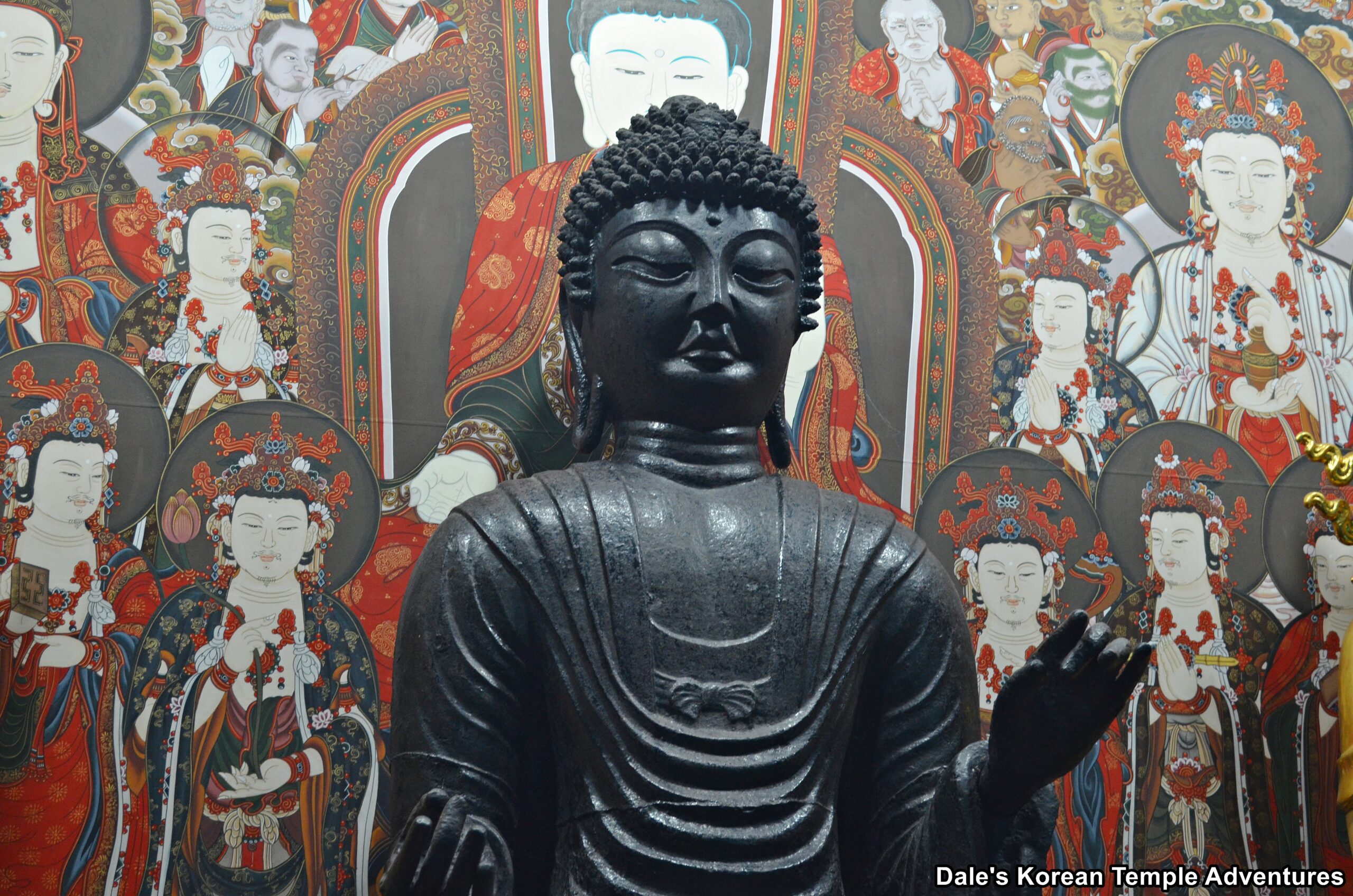
Temple History
Danhosa Temple is located in the southeastern part of the city of Chungju, Chungcheongbuk-do near agricultural fields and an elementary school. The exact date of the temple’s founding is unknown; however, it was repaired during the reign of King Sukjong of Joseon (r. 1674-1720) during the Joseon Dynasty (1392-1910). At that time, it was known as Yaksa Temple, after the Buddha of Medicine, Yaksayeorae-bul. Eventually, the temple would come to be known as Danhosa Temple in 1954. Additionally, Danhosa Temple belongs to the Taego-jong Order, which is the second largest Buddhist Order in Korea next to the Jogye-jong Order.
Danhosa Temple is home to a single Korean Treasure, Korean Treasure #512, which is the “Iron Seated Buddha of Danhosa Temple.”
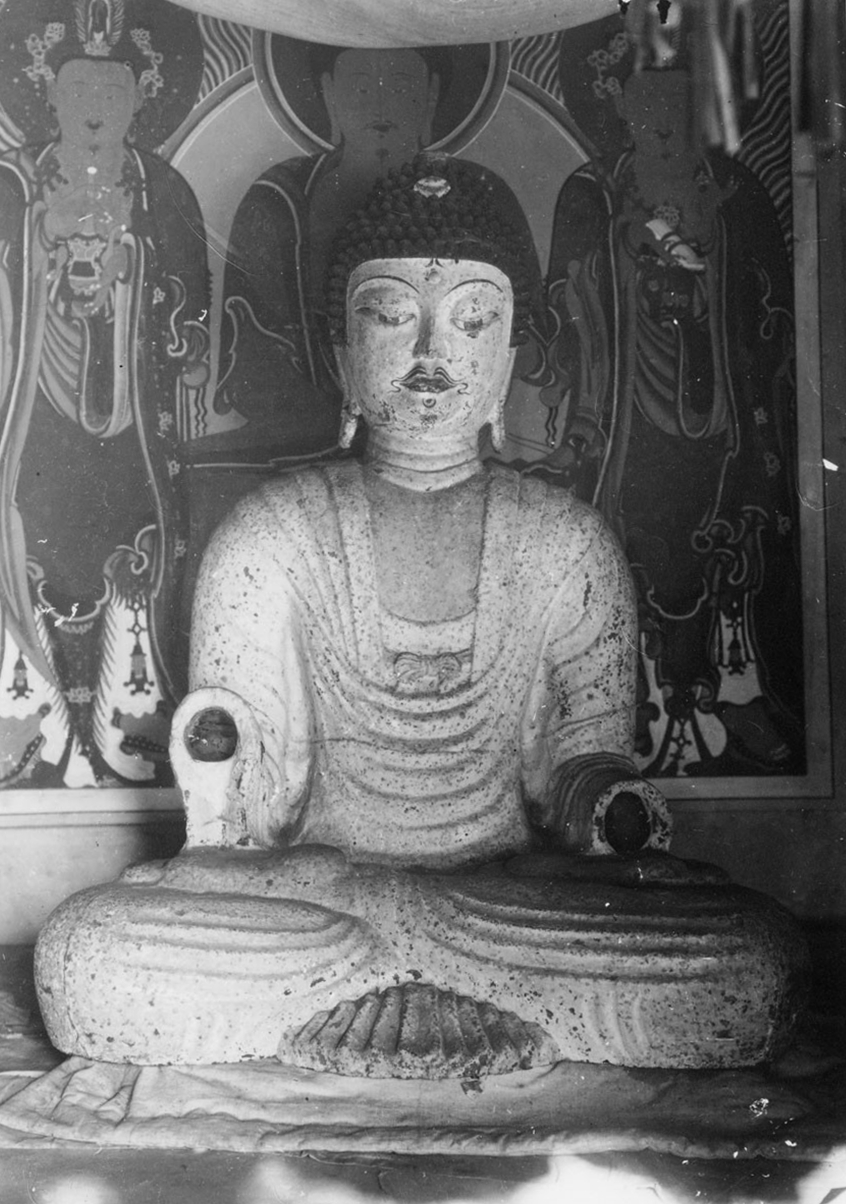
Temple Layout
You first approach the compact temple grounds off of a four lane road. And the first thing to greet you upon entering the temple grounds is a beautiful, highly twisted, red pine tree. It’s simply stunning in the way that it bends. And between this red pine and the Daeung-jeon Hall is the “Three-Story Stone Pagoda of Danhosa Temple.” This pagoda, which is a bit hidden behind the side-winding central pine tree, is believed to date back to the mid-Goryeo Dynasty (918-1392). The pagoda is made from a single block of stone, and it’s Chungcheongbuk-do Tangible Cultural Property #69.
The Daeung-jeon Hall is adorned with large panel paintings of the Shimu-do (Ox-Herding Murals) and a separate collection of lotus flower murals. There are two eye-bulging dragons on opposite sides of the main hall’s signboard. Stepping inside the Daeung-jeon Hall, your eyes will be instantly drawn to the statue of the “Iron Seated Buddha of Danhosa Temple” on the main altar. While unnamed in the official listing by the Korean government, it appears as though the “Iron Seated Buddha of Danhosa Temple” is a statue of Amita-bul (The Buddha of the Western Paradise). The black statue has an oval face. The ears are elongated, and the three wrinkles, known as “samdo” in Korean, are clearly evident on his neck. The Buddha’s robe is draped over both shoulders. The upper body of the statue is rectangular in shape with narrow, round shoulders and a flat chest. The Buddha has both of his legs tucked up under him, and there are horizontal folds in his robe below the knees. The original location of the statue is unknown, but it’s believed to have first been built around the 11th century. The “Iron Seated Buddha of Danhosa Temple” is Korean Treasure #512. Additionally, this main altar iron statue is joined on either side by two newer (non-iron) statues of Gwanseeum-bosal (The Bodhisattva of Compassion) and Daesaeji-bosal (The Bodhisattva of Wisdom and Power for Amita-bul). The rest of the interior is occupied by a beautiful, modern Gamno-do (Sweet Dew Mural) and a Shinjung Taenghwa (Guardian Mural). Both Daeung-jeon Hall murals seem to have been painted by the same unknown artist. There are also a few dozen statuettes dedicated to Gwanseeum-bosal lining the walls of the main hall.
To the right of the main hall is multi-purpose Geukrak-jeon Hall. The Geukrak-jeon Hall at Danhosa Temple certainly isn’t as grand as the Daeung-jeon Hall. The exterior walls are adorned in dancheong colours. Stepping inside this shrine hall, you’ll find a simple triad of statues on the main altar. In the centre rests an image of Amita-bul joined on either side by Gwanseeum-bosal and Jijang-bosal (The Bodhisattva of the Afterlife). Also occupying the interior of this shrine hall is a rather rudimentary painting dedicated to Sanshin (The Mountain Spirit) on the left wall, a mural dedicated to Chilseong (The Seven Stars) on the right wall, and both a Jijang-bosal mural and a Shinjung Taenghwa (Guardian Mural) on opposite sides of the main altar triad. All pieces of artwork seem to have been executed by the same artist.
Standing next to the Geukrak-jeon Hall is a six metre tall, chipped golden statue dedicated to Mireuk-bul (The Future Buddha). This statue was first built on the temple grounds at Danhosa Temple in 1973. Spread throughout the rest of the temple grounds, and mainly to the left of the Daeung-jeon Hall, are a collection of stonework. These statues include a jovial image of Podae-hwasang (The Hempen Bag), a smaller statue dedicated to Mireuk-bul, and a contemplative statue dedicated to Gwanseeum-bosal backing a lotus pond. There’s also a uniquely designed slender five-story pagoda in this area, as well, with manja symbols on each of the four sides of the structure on all five stories of the pagoda.
The only other building on the temple grounds is the administrative office and monks’ dorms located behind the Daeung-jeon Hall.
How To Get There
The easiest way to get to Danhosa Temple from the Chungju Intercity Bus Terminal is to take Bus #610. You’ll need to take this bus for four stops and get off at the “Danwol-dong stop – 단월동 하차.” This bus ride should take about 10 minutes. From where the bus drops you off at the stop, you’ll need to head south and cross over the “Sindae 2-gil – 신대2길” road. The walk from where the bus drops you off to Danhosa Temple is about 200 metres, or three minutes.
Overall Rating: 6/10
The rather obvious highlight to Danhosa Temple is the Korean Treasure, the “Iron Seated Buddha of Danhosa Temple.” The statue is beautifully executed and well-preserved considering that it dates back to the 11th century. The interior of the Daeung-jeon Hall has a beautiful collection of murals inside it, as well. One other beautiful highlight at Danhosa Temple is the twisting red pine that takes up most of the temple courtyard. While compact in size, Danhosa Temple definitely has its share of highlights.
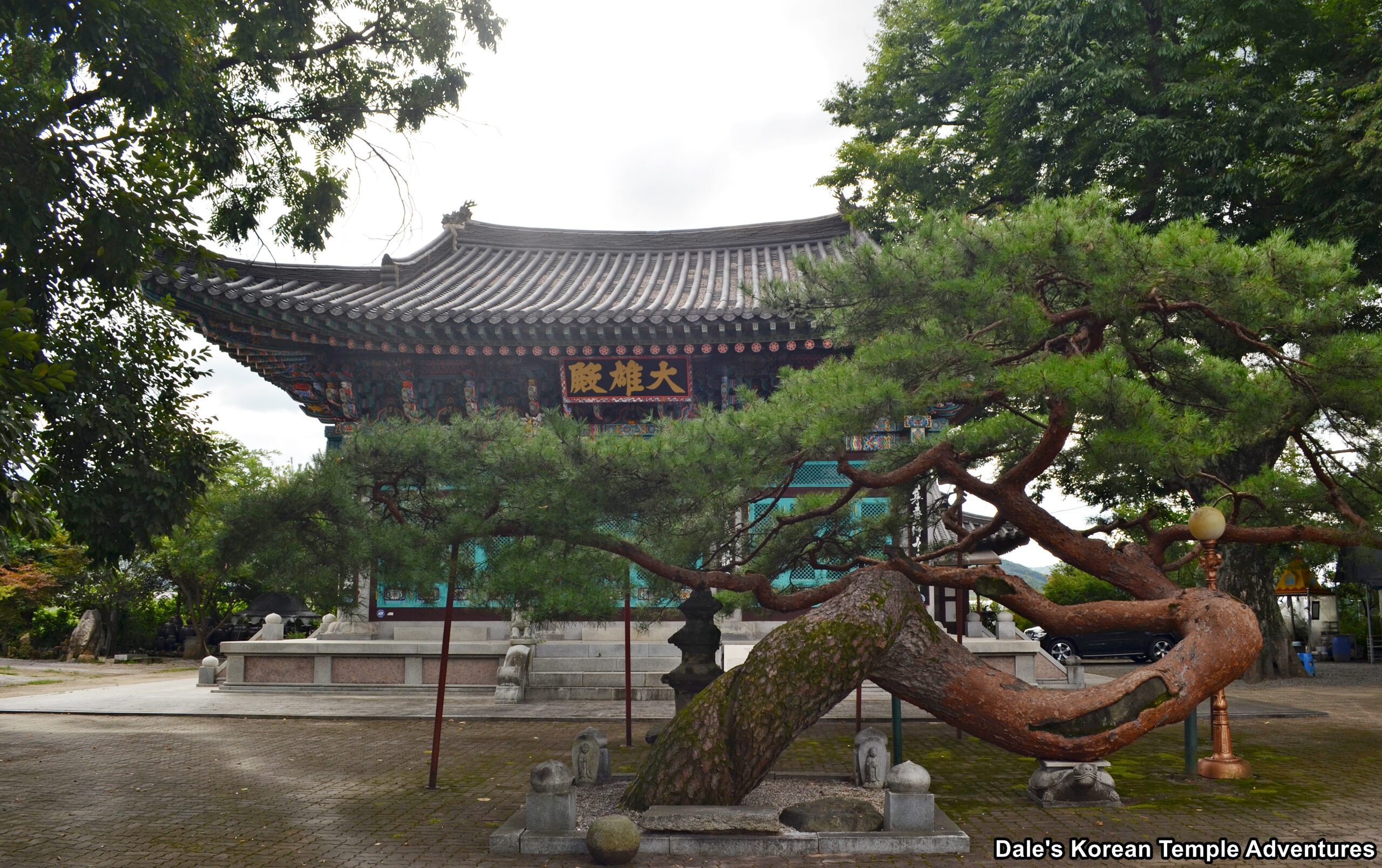
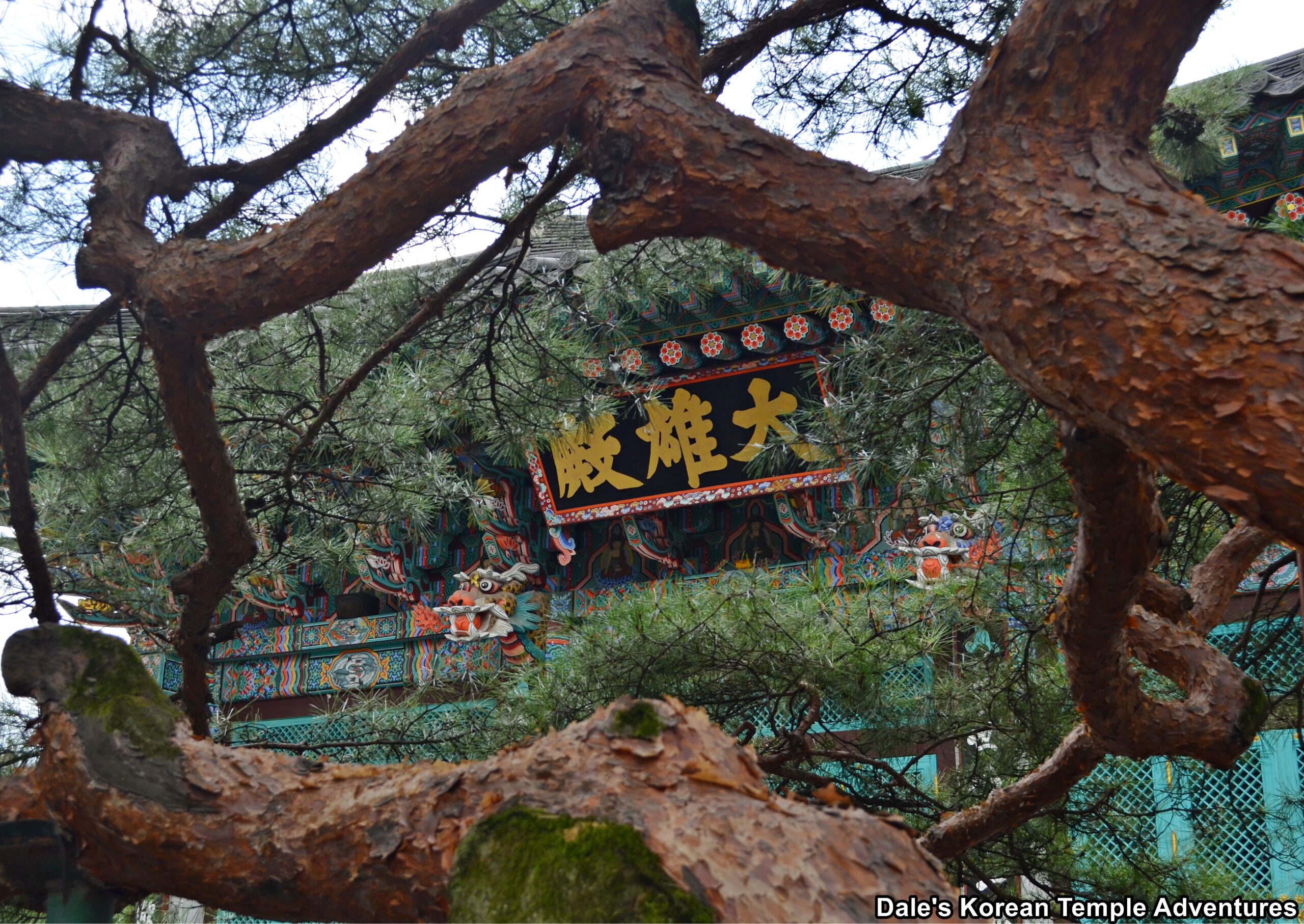
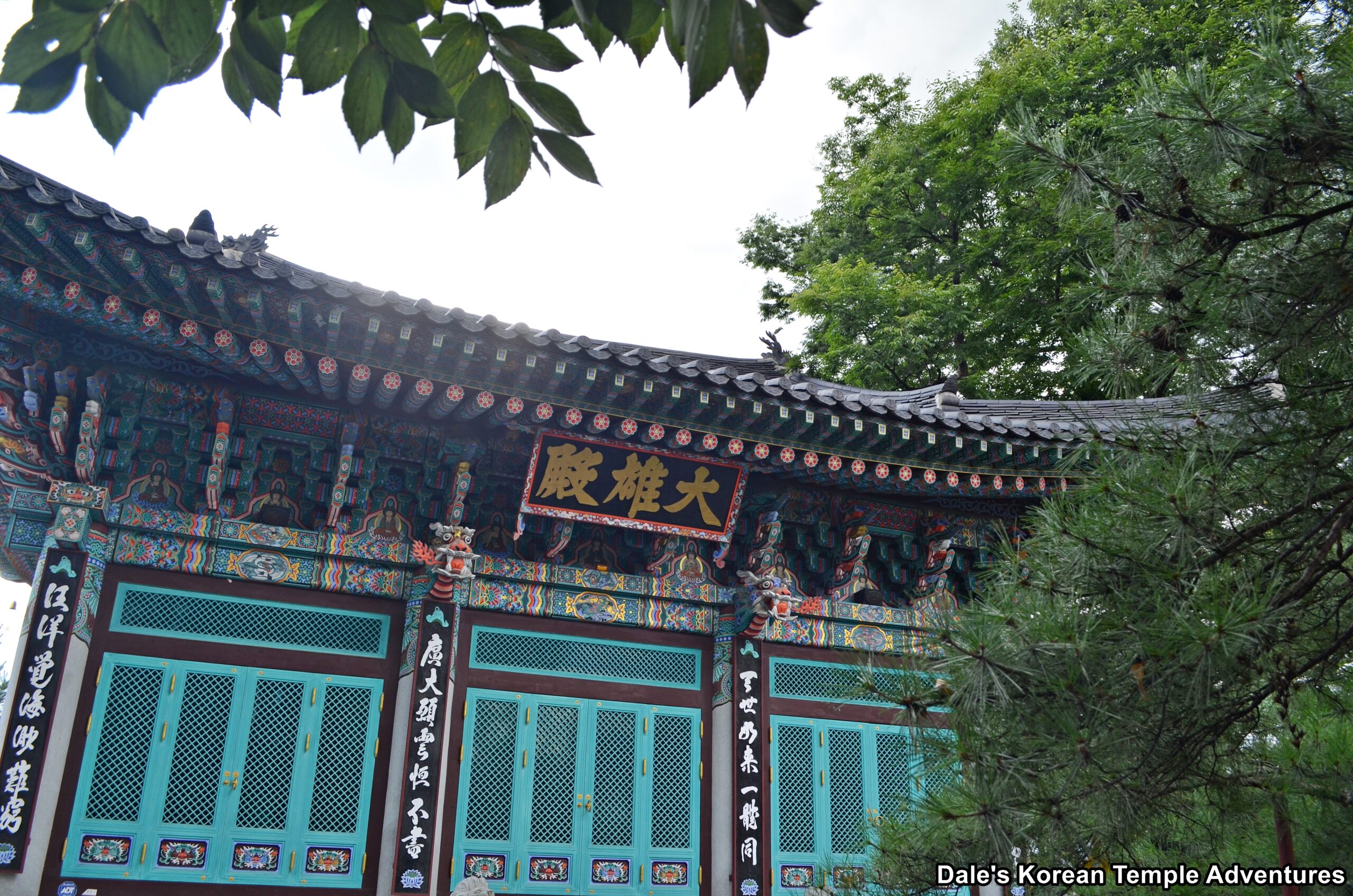
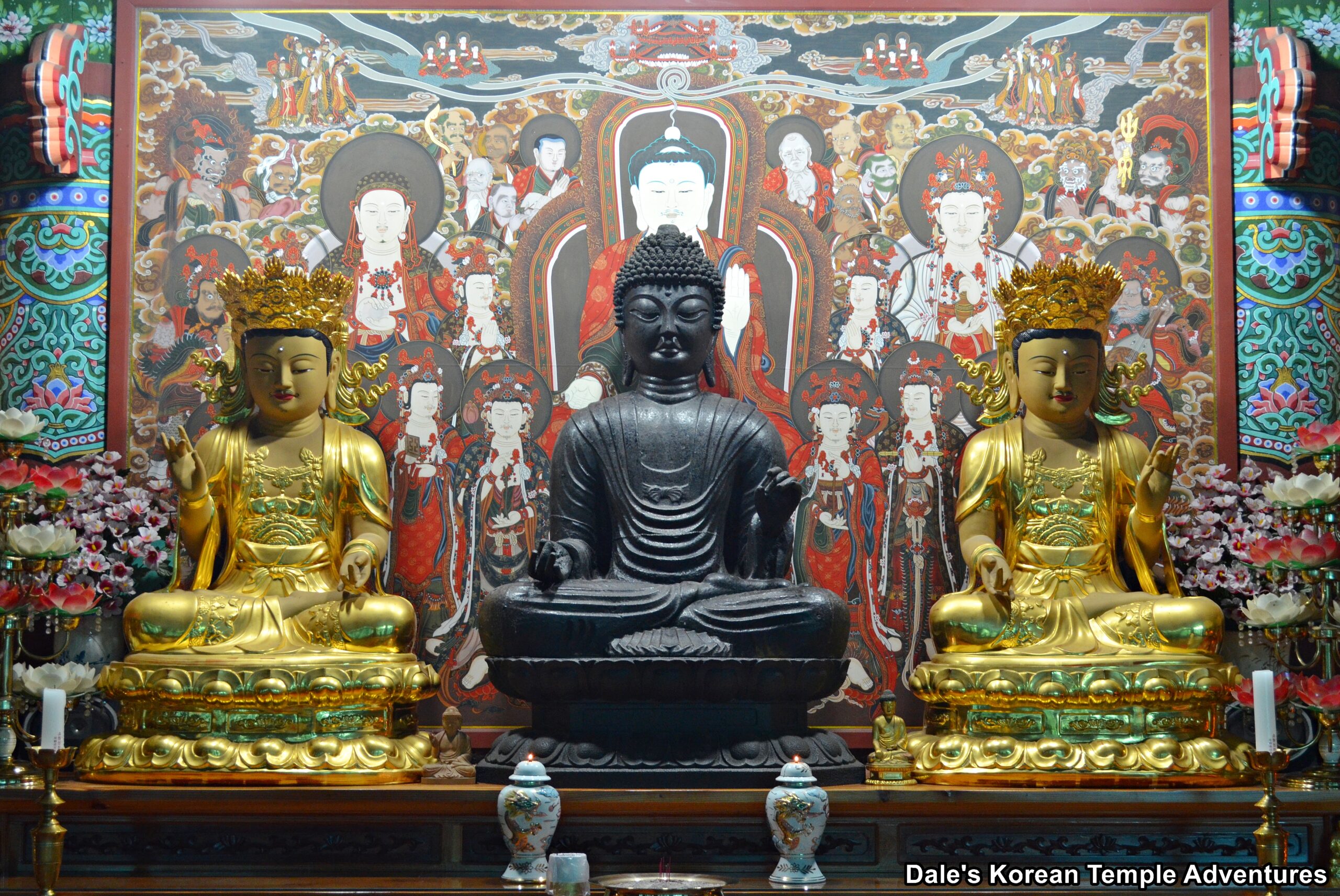
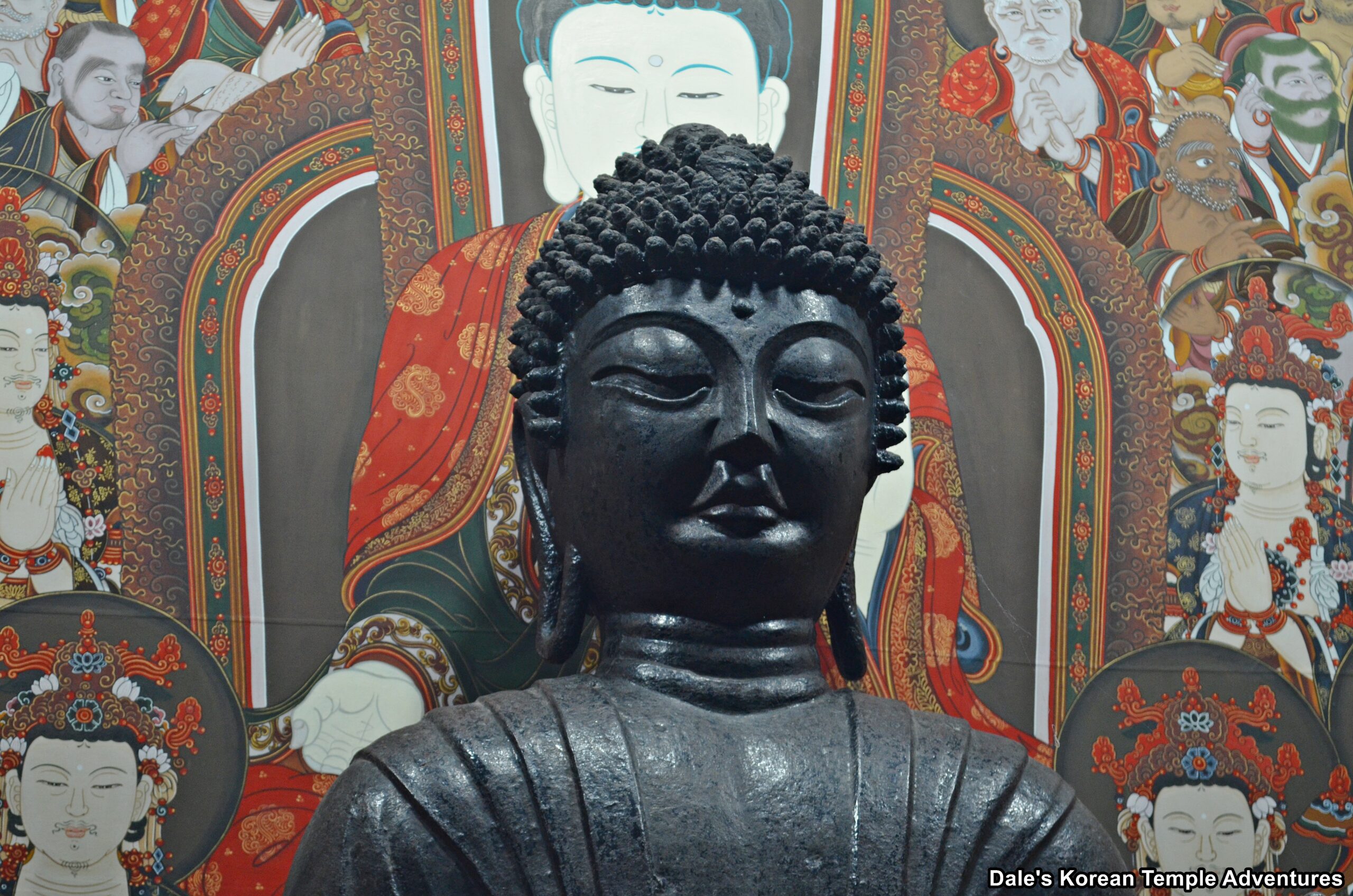
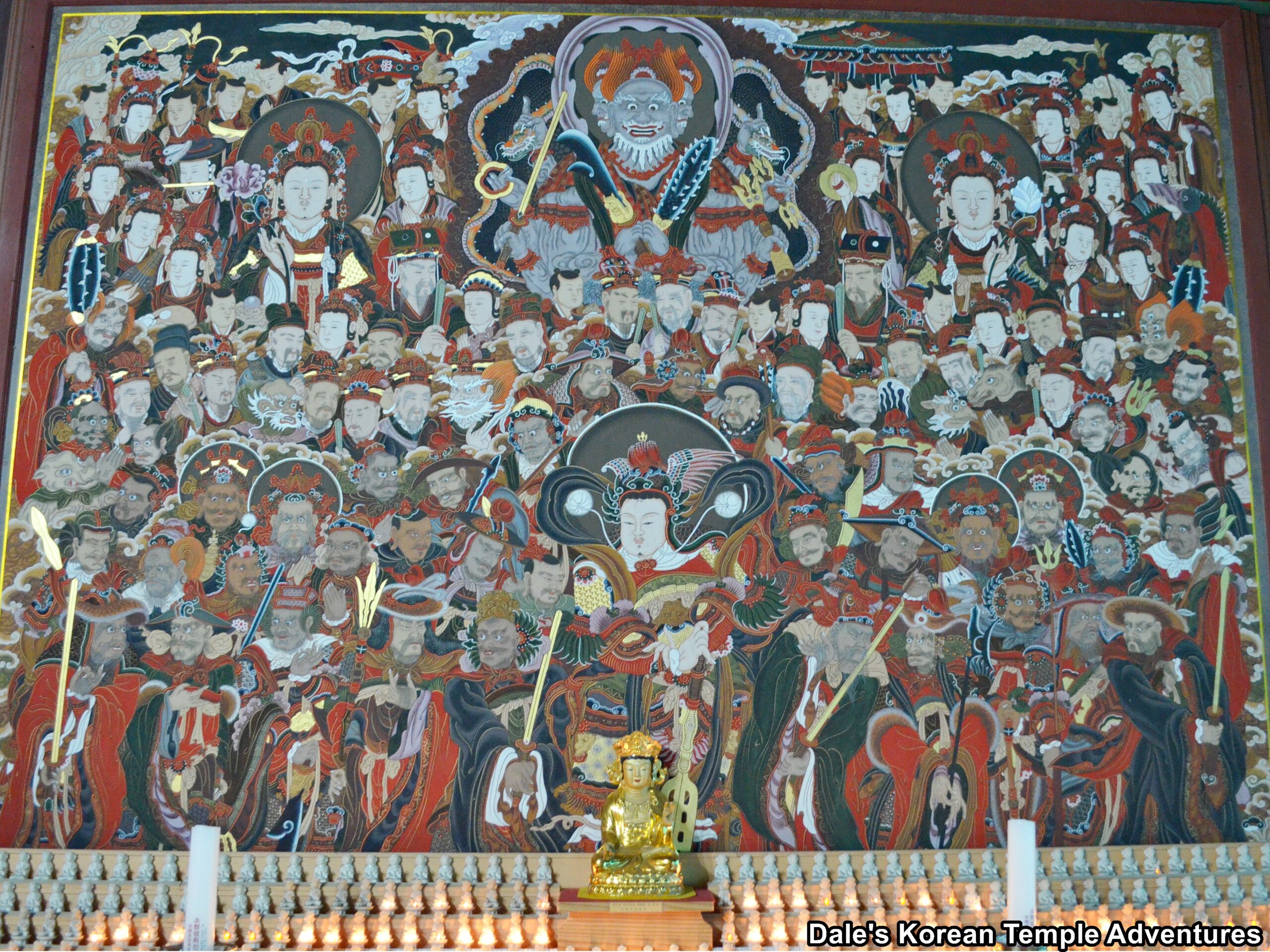
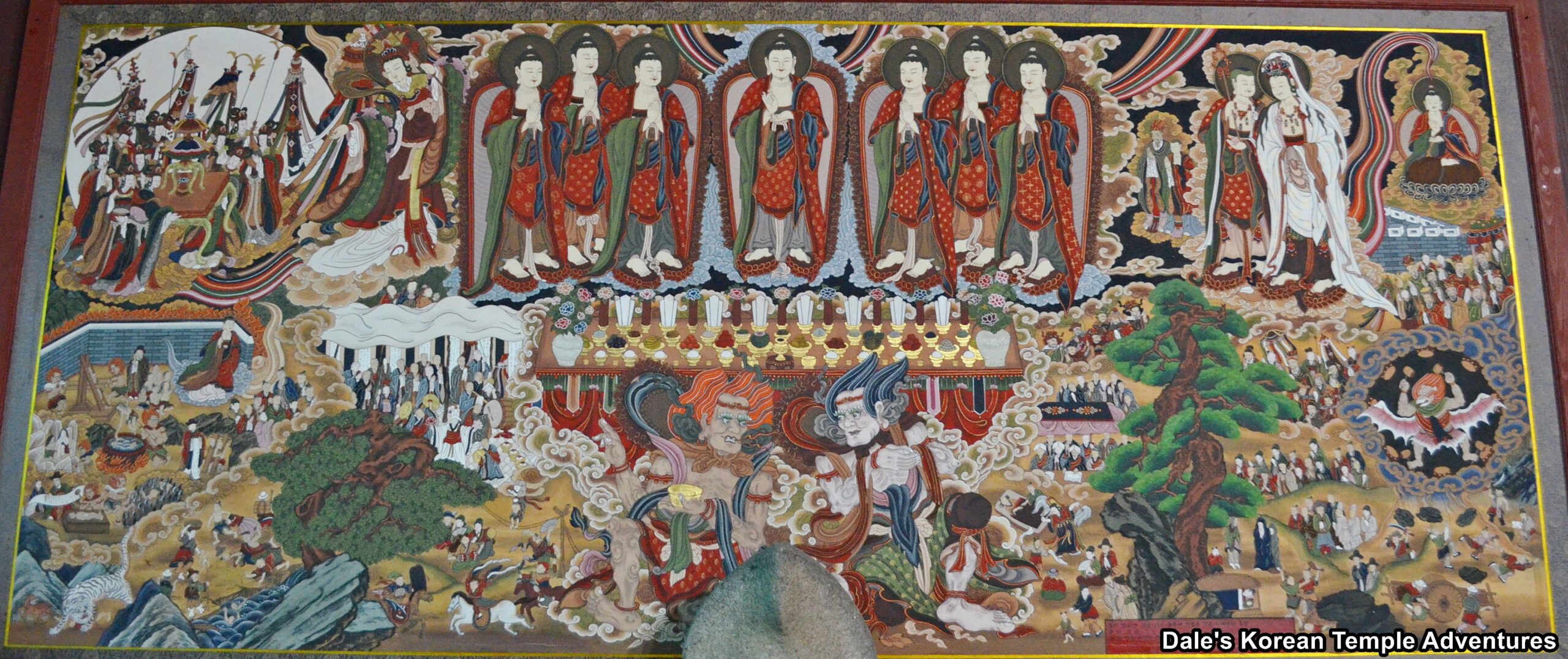
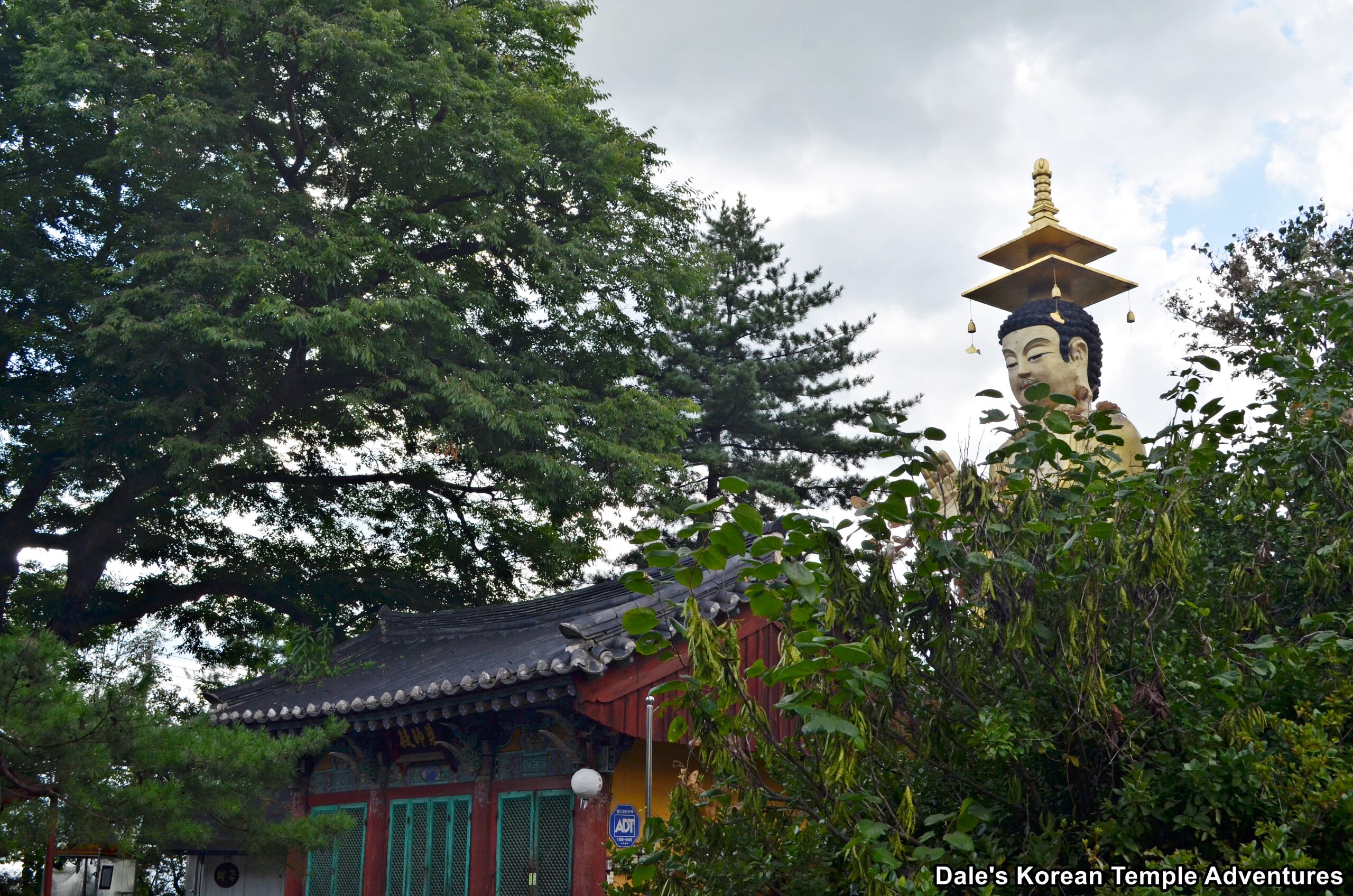
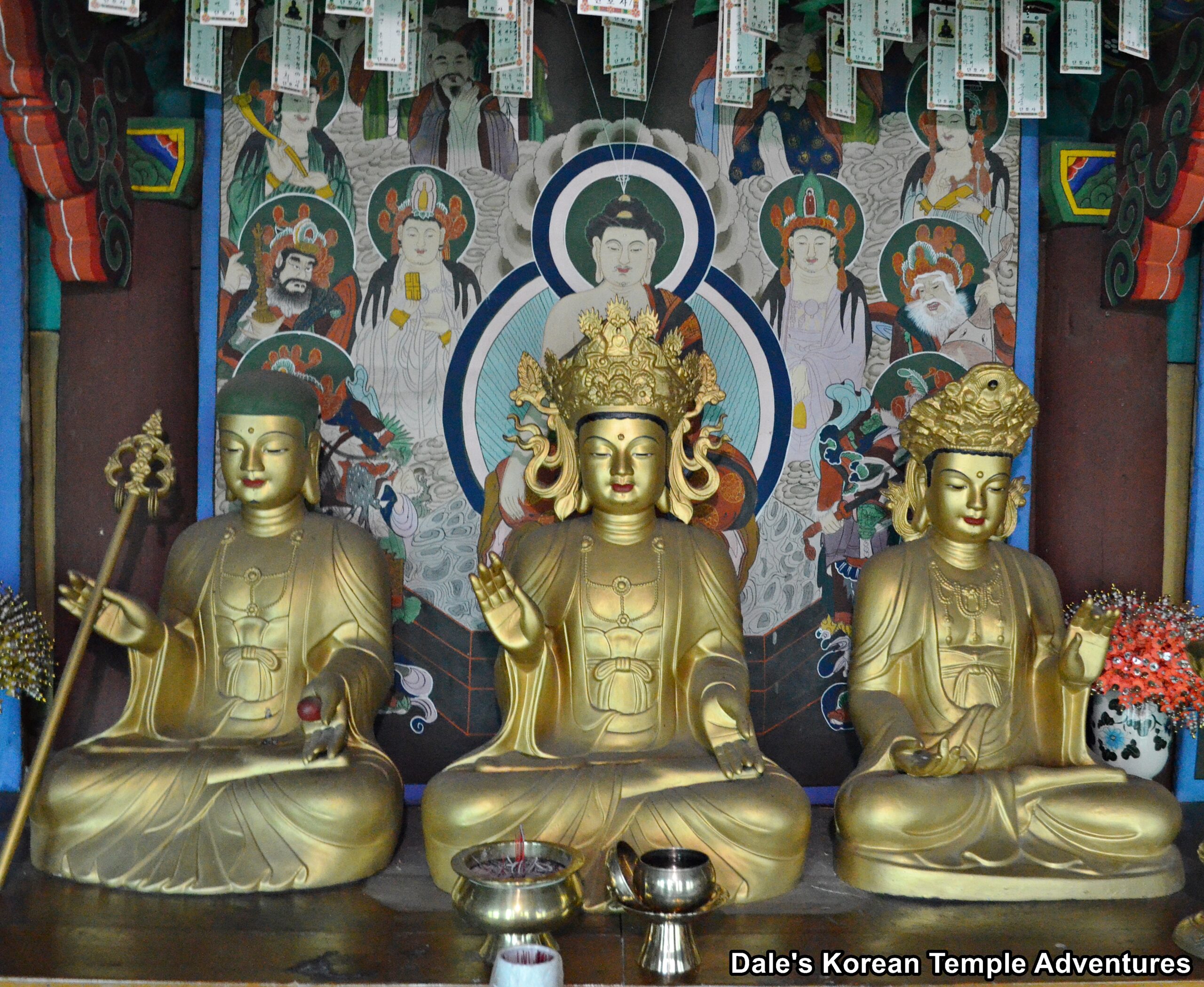
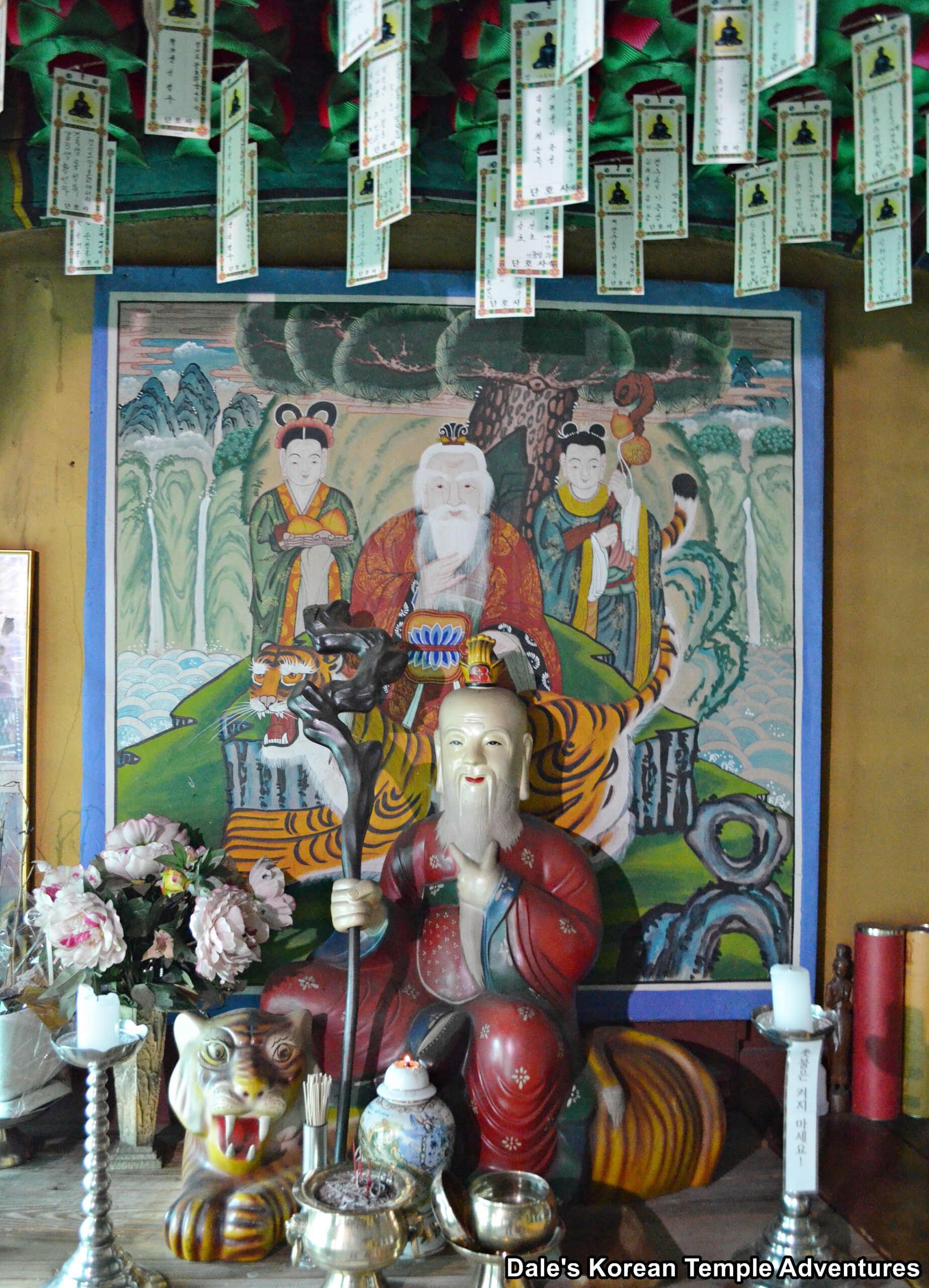
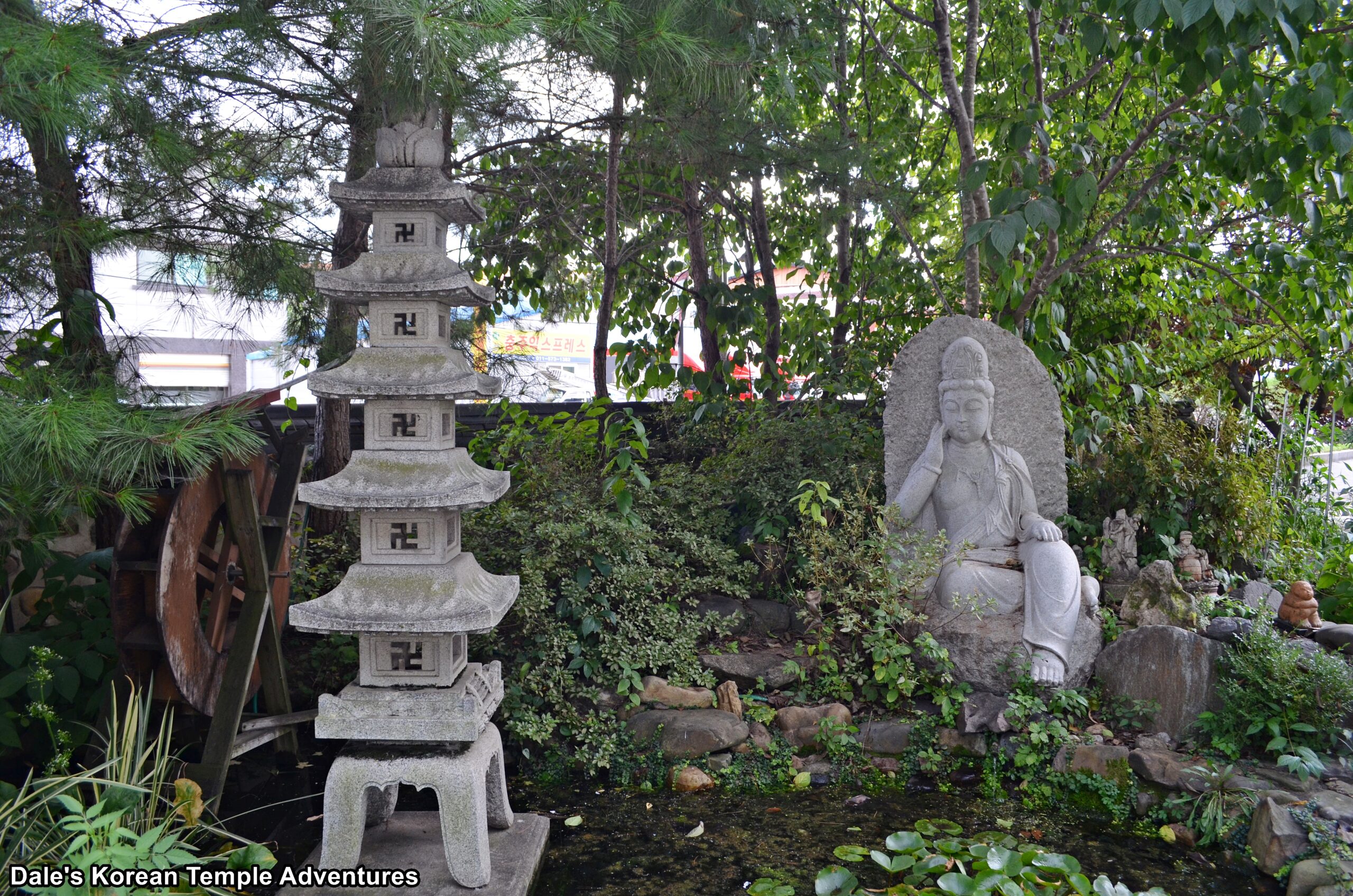
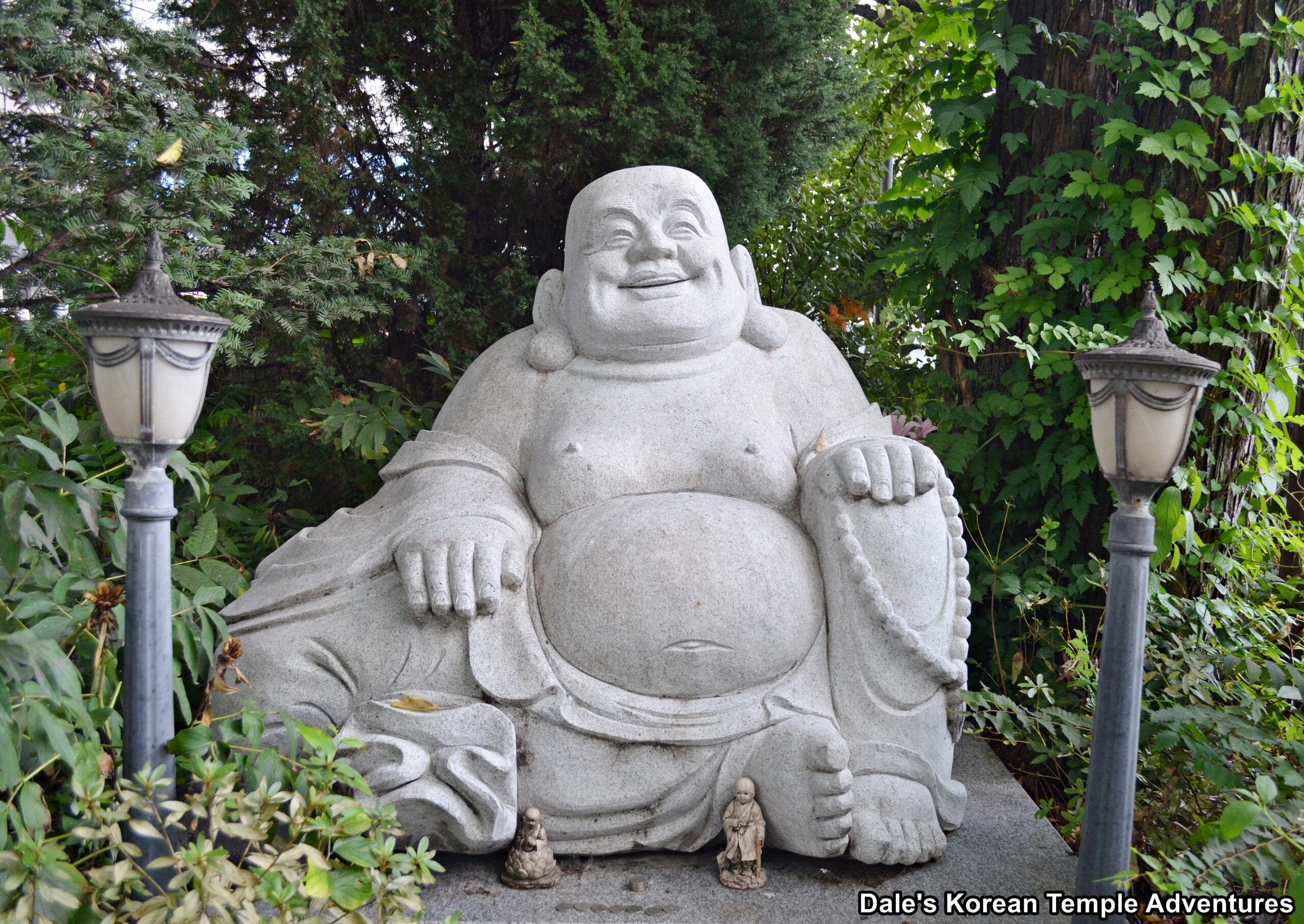
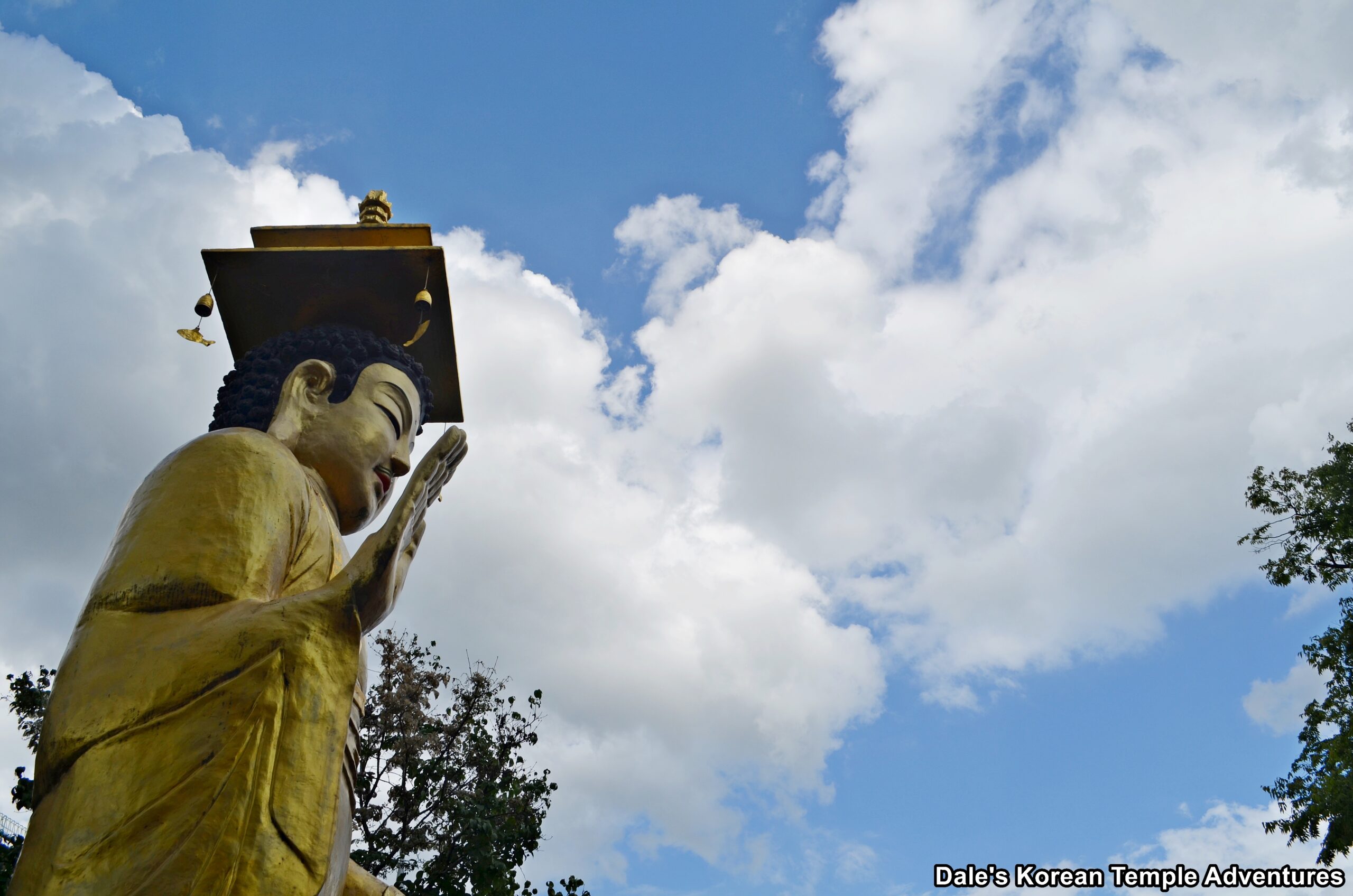


Recent comments